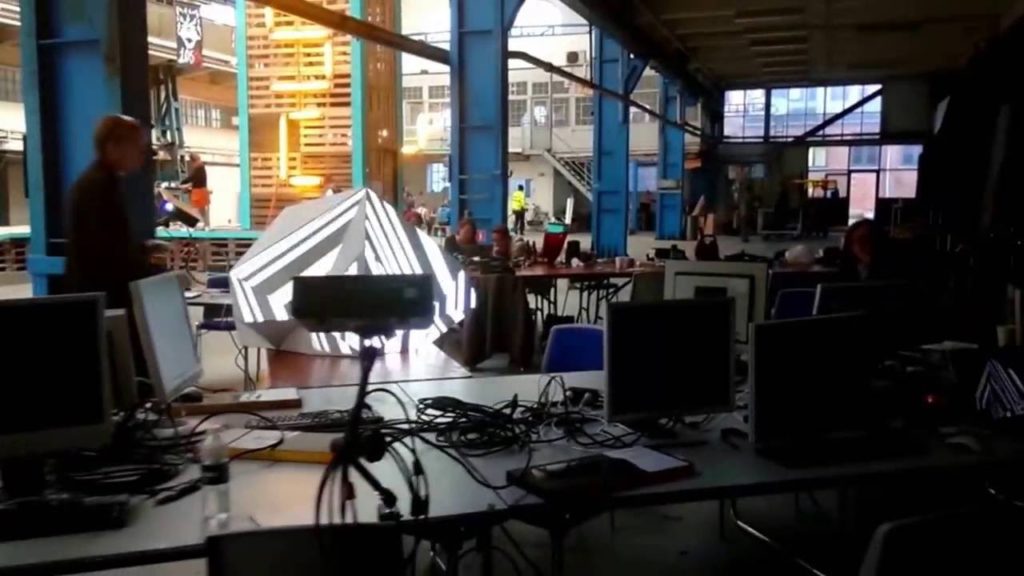I wanted to give you readers a bit of an update on my project’s progress. Right now I am working on a Raspberry Pi projection mapping installment. I am torn between using some sort of computer vision interaction and a physical piece that is set with a projection mapping playlist.
Inspiration
Idea 1: Computer Vision
The projection mapping with computer vision idea comes from a sparkfun tutorial I came across that is just what it says it is. Using a small DSLR camera, with some open source code and really complete documentation. This option would have a really cool interactive piece, but not the most intricate projection mapping design.

Idea 2: Projection Mapping
The second inspiration is exclusively a projection mapping set up. This is also based in open sourced material, and has somewhat less direction for what to do, but there is enough documentation to make it work. This option would have more intricate projections mapped onto a non-uniform surface. An example can be seen in the video below.
Both options would satisfy the project constraints, and both are interesting installments. I am leaning towards the first option, because of how interactive it really is. I just this it will go nicely with one projector, and if I can change the image it would work the best.
Progress
One of the biggest concerns I had at my last update was the cost of the project. I had a BOM of over $200, and was debating even working with a Ras Pi, because of the expense. At best I thought I could lone a board, but would still have to fork out the $60 for the DSLR attachment. Well, I am happy to report that I have loaned all the necessary attachments from the ITLL and have procured a complete set able to create either option. This means the project will cost almost nothing. For the final installment I may need to borrow a projector, but I think I have a few options open for that.
I have also began messing around on the Ras Pi, and everything seems to be functioning as it should. I have updated the linux software and will be installing everything needed for whichever route I chose in the next couple of days.


7 Comments. Leave new
Hey Owen, great project! I like the dynamic aspect of it and although a challenge (Especially for MechE’s) I think software development can be very creative. I am looking forward to seeing what you come up with. I think having the Pi recognize human movement will be the most difficult part but aesthetically might not be necessary.
This idea is super creative! If you end up going with the dice suggestion, you can have many different aesthetics included in your project. Each time you roll the dice, it’s a different aesthetic.
Is Raspberry Pi delicious?
Hi Owen,
Great idea. The projection look amazing. I am really excited to see your final product.
Owen,
Your idea is really creative and challenging. I have no problem finding any sort of dynamic element with your project and I think that it will turn out really cool. I will continue to think of ideas that you can apply this to and an aesthetic that you can pursue more specifically for the rest of the project.
I’ve working with projections a bit, it can be very time intensive. I think your simulation idea will be a lot of work, and the aesthetic isn’t super clear. But I like your overall concept. It seems like it’d be really easy to apply an aesthetic with projections, since you can just use whichever images you want to suit your aesthetic, so I would decide on one now and change it later if you find something you like more
Hey Owen I like the idea and the implementation of Raspberry Pi. I’m curious about the aesthetics you’ll implement into the projection mapping. The dice idea sounds interesting and I’m excited to see your final project.